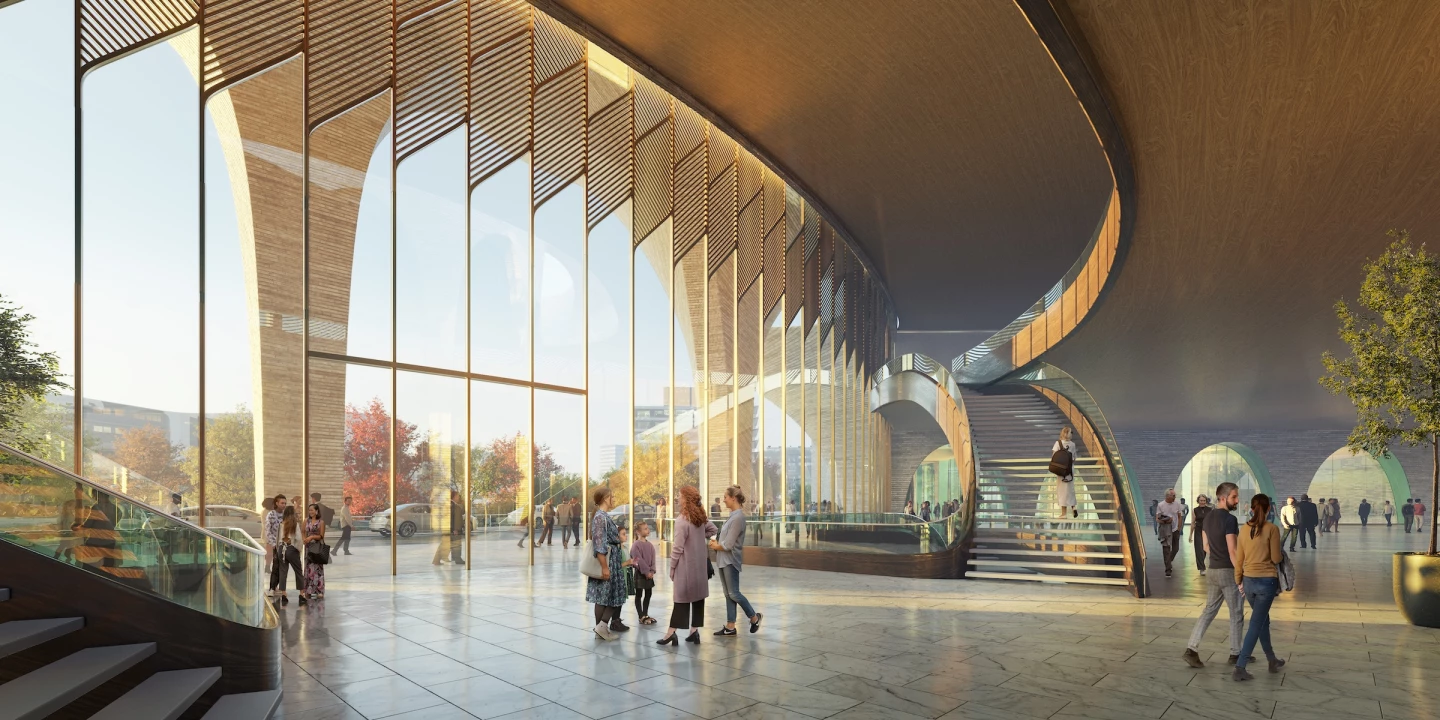With its upcoming scientific research center in Uzbekistan, Zaha Hadid Architects has taken a low-tech approach to maintaining a comfortable temperature. The eye-catching building will feature an ingenious passive cooling system inspired by traditional local architecture.
Named after an important 15th Century poet, author, linguist and statesman, the Alisher Navoi International Scientific Research Centre will be defined by large swooping arches and expansive glazing. Its overall form riffs on traditional wind catching towers of Central Asian and Middle Eastern architecture that have been used for centuries to help take the sting out of the desert heat.
Its curvy supporting arches, which are being built from local brick, are conceived as hollow structures with openings that capture the wind and channel air into the building. In the hottest summer months, this system will be supported by some electric fans and water misting to cool the air before it circulates within the structure.
When it's not windy, the hollow arched structures will also naturally create a chimney effect (aka stack effect), allowing warmer air to escape through the openings at the top of each arch. This works because warm air naturally rises and escapes, creating a pressure difference that in turn draws in cooler air from lower levels and promotes ventilation throughout the building. Recent Stirling Prize winner New Library, Magdalene College also used the technique.

"These cooling principles are enhanced by the day-night cycle, extracting warmer air while trapping cooler air below," explains Zaha Hadid Architects. "Coupled with high thermal mass of the center's structure, optimum conditions of comfort can be maintained with minimal energy consumption. Courtyards and skylights bring natural light into the heart of the center while deep roof overhangs provide its facades with effective solar shading in summer yet permit winter sun into the building to warm the interiors."
The interior of the research center will measure 23,000 sq m (almost 250,000 sq ft) and include the Navoi State Museum of Literature, as well as research areas, a workshop and a repository housing a collection of 3,500 historical books and manuscripts. Incorporating 13 permanent exhibition halls around a central courtyard, it will encourage collaboration between literary education, research, and the performing arts.
We've no word yet on when this one is expected to be completed.
Source: Zaha Hadid Architects








